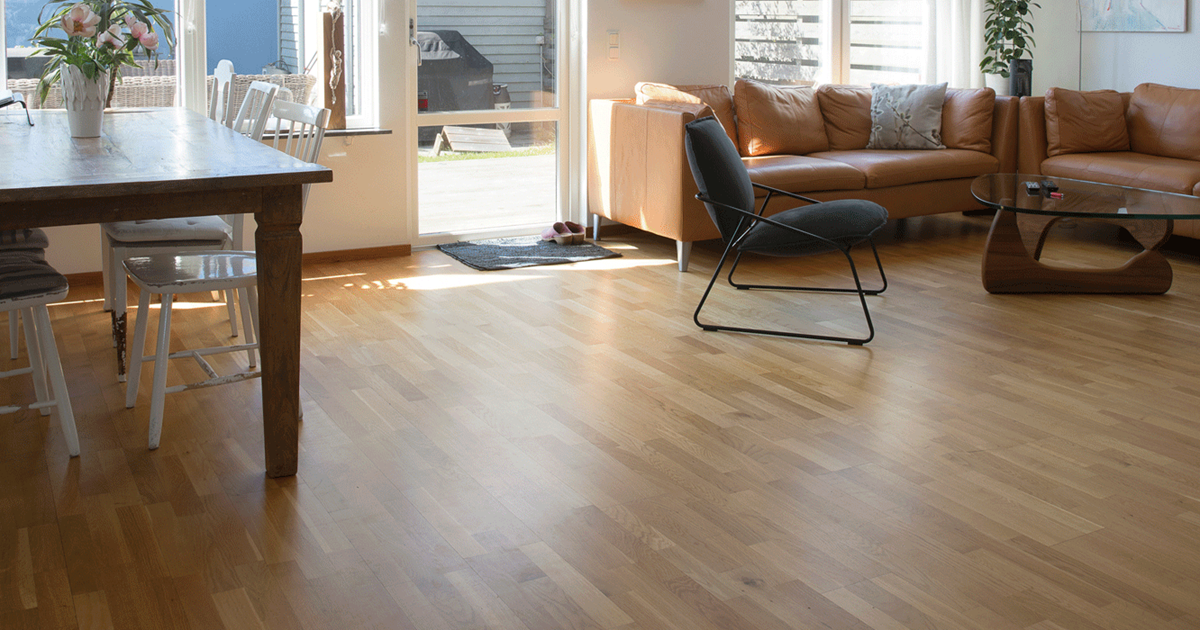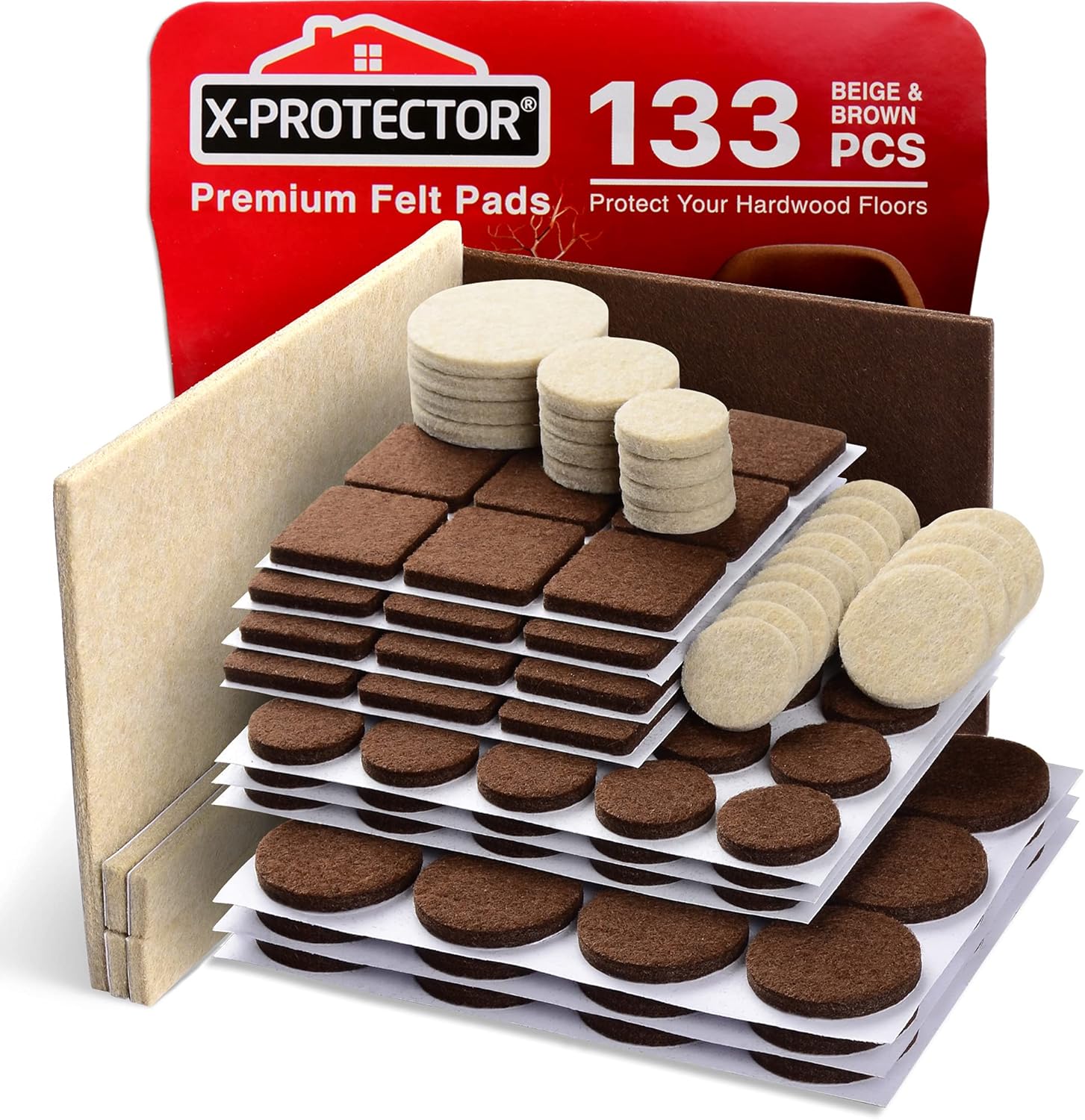Protect Wood Floor from Furniture. Your wood floors are the pride of your home, bringing warmth and elegance to every room. But every time you move a chair or rearrange your living room, you might feel a twinge of worry about scratches and dents.
Protecting your wood floor from furniture isn’t just about preserving beauty—it’s about maintaining the value of your investment. Imagine being able to slide your sofa or dining table without a second thought, knowing your floors are safe and sound. You’ll discover simple, effective strategies to keep your wood floors looking pristine, so you can enjoy your space without the stress.
Ready to transform your home into a haven where beauty and functionality coexist effortlessly? Keep reading to find out how.

Furniture Pads And Protectors
Wood floors add a touch of elegance to any home, but they can easily be damaged by the very furniture that complements them. That’s where furniture pads and protectors come in handy. These simple tools can save you from the frustration of scratches and dents, ensuring your floors remain pristine.
Furniture Pads: Your Floor’s Best Friend
Furniture pads are your first line of defense against unsightly marks. They come in various materials like felt, rubber, and silicone, each offering unique benefits. Felt pads, for example, are soft and ideal for lightweight furniture, while rubber pads provide extra grip for heavier items.
Have you ever moved a chair and cringed at the sound of wood scraping against wood? Installing furniture pads can eliminate that awful noise. They’re easy to attach and can be cut to fit any size leg or base.
Choosing The Right Protector
Not all furniture protectors are created equal. Consider the weight and type of your furniture when selecting the right one. Heavy pieces like sofas may need more durable protectors, such as rubber pads, which won’t compress over time.
Think about your lifestyle, too. If you frequently rearrange your space, opt for pads that glide smoothly across surfaces. This makes the process easier and protects your floor in the long run.
Diy Solutions For Budget-conscious Homeowners
Don’t want to spend a fortune on furniture pads? You can make your own using household items. Cut pieces of old carpet or towels to size, and attach them with adhesive or double-sided tape. This budget-friendly option works well and keeps your floors safe.
Finding creative solutions can be fun. Plus, you’ll feel accomplished knowing you’ve protected your floors without breaking the bank.
Regular Maintenance: A Must
Furniture pads and protectors are not a one-time fix. Regularly check them to ensure they’re intact and replace any worn-out ones. This simple maintenance step can prevent future damage and keep your floors looking new.
Ask yourself: when was the last time you checked your furniture pads? A quick inspection can save you from costly repairs later.
Keep Your Floors Shining
By using furniture pads and protectors, you’re investing in the longevity of your wood floors. This small effort can make a big difference in maintaining the beauty and value of your home.
So, next time you move your furniture, remember the importance of protecting your floors. Your future self will thank you for the foresight.

Rearranging Techniques
Protecting wood floors from furniture involves strategic rearranging techniques. Use furniture pads to prevent scratches. Opt for lighter pieces or rearrange them periodically to distribute weight evenly.
Rearranging furniture can breathe new life into a room, but it can also pose risks to your wood floors. How can you change your space without leaving unsightly scratches? With some simple rearranging techniques, you can move your furniture safely and keep your floors looking pristine. Let’s explore some practical steps that you can take to protect your floors while transforming your living space.
Use Furniture Sliders
Furniture sliders are a game-changer. They are small pads that fit under furniture legs, allowing you to glide heavy items across the floor effortlessly. Next time you’re thinking about switching the location of your couch, try using sliders. These handy tools reduce friction and prevent scratches, making them perfect for large pieces like sofas and tables. You’ll find them in various sizes to suit different furniture legs. Consider keeping a set in your home for those spontaneous rearrangement moments.
Lift, Don’t Drag
Dragging furniture might seem easier, but it’s a surefire way to damage your floors. Try lifting instead. Enlist the help of a friend or family member if needed. Lifting distributes the weight more evenly and prevents direct contact with the floor. If you’re worried about your back, remember to lift with your knees, not your back. This small adjustment can save your floors and your health.
Plan Your Layout
Before you start moving furniture, sketch a layout of your room. Planning can save you time and effort. Think about the flow of the room and how you use the space. Does your current setup work well, or is there something that could be improved? Having a clear plan helps you avoid unnecessary moves. It also ensures you’re not left with furniture halfway across the room because it doesn’t fit the way you imagined.
Use Area Rugs Strategically
Area rugs are not just decorative—they’re protective. Placing them under heavy furniture can prevent direct contact with the floor. This acts as a buffer, absorbing pressure and reducing wear. Think about high-traffic areas where rearrangement happens most often. A well-placed rug can enhance your room while safeguarding your floors. Plus, they add a cozy feel to any space.
Consider Furniture With Soft Pads
Some furniture comes equipped with soft pads on the legs. If yours doesn’t, consider adding them. These pads are often made of felt or rubber and can be easily attached. They’re a simple addition that can make a significant difference in floor protection. Next time you purchase new furniture, look for options that come with these pads. It’s a small detail that can save you a lot of trouble later. — How do you ensure your floors remain scratch-free during a room makeover? Share your tips and tricks in the comments below!
Regular Maintenance Routine
Maintaining the beauty of wood floors requires regular care. A consistent routine helps prevent scratches and wear from furniture. This ensures your floors remain pristine for years. Simple practices make a big difference in preserving the shine and elegance of wood.
Dust And Sweep Regularly
Dust and dirt can scratch wood surfaces. Sweep them away with a soft broom. A vacuum with a floor brush attachment also works well. This routine keeps your floors free from debris. It reduces the risk of scratches and dents from furniture.
Use Gentle Cleaning Solutions
Harsh chemicals can damage wood floors. Opt for mild cleaners instead. Mix warm water with a few drops of dish soap. This solution cleans and maintains the floor’s finish. Avoid soaking the wood; damp mopping is sufficient.
Check For Furniture Marks
Furniture can leave marks on wood floors. Regularly inspect the areas under tables and chairs. Look for dents or scratches. Early detection allows for prompt repairs. This prevents further damage to your floors.
Polish For A Glossy Finish
Polishing adds a protective layer to wood floors. Choose a polish suited for your floor type. Apply every few months for best results. It restores shine and reduces visible wear. This step keeps your floors looking fresh and new.
Repair Minor Damage Promptly
Minor scratches and dents can worsen over time. Address them as soon as you notice. Use a wood filler or scratch repair kit. This maintains the integrity of your floors. Timely repairs keep your wood floor looking its best.

Choosing The Right Furniture
Choosing the right furniture for your home can make a big difference. Not only in style but also in protecting your wood floors. The wrong choice can lead to scratches and dents. Selecting the right pieces can save you money and time on repairs.
Choosing Lightweight Furniture
Lightweight furniture reduces the risk of scratches. Heavy items are hard to move and can damage floors easily. Opt for items you can move without much effort. This choice helps in cleaning and rearranging your space.
Furniture With Soft Legs
Look for furniture with soft legs or feet. Rubber or felt pads work well. They provide a cushion between the floor and furniture. This cushion prevents scratches and keeps your floors safe.
Adjustable Furniture Options
Adjustable furniture is versatile and floor-friendly. Tables and chairs with adjustable legs can be leveled easily. This prevents uneven pressure on the floor. Making it less likely to get damaged.
Investing In Quality Pieces
High-quality furniture tends to last longer. It also means fewer replacements and fewer floor scratches. Quality pieces are well-made and often come with protective features. Choose wisely to protect your investment and floors.
Frequently Asked Questions
How Can I Protect Hardwood Floors From Furniture?
Use felt pads under furniture legs to prevent scratches. Regularly clean floors to remove dirt and debris. Consider using rugs in high-traffic areas. Use furniture coasters for heavy items. Always lift furniture when moving, never drag it.
What Is The Best Furniture Protector For Hardwood Floors?
Felt pads are the best furniture protectors for hardwood floors. They prevent scratches and allow easy movement. Choose high-quality, self-adhesive felt pads for optimal protection. Regularly check and replace them to maintain effectiveness. Ensure they fit well under furniture legs for maximum coverage and protection.
How Do I Protect My Floor From Heavy Furniture?
Use furniture pads under legs to prevent scratches. Place rugs or carpets for extra protection. Rearrange furniture gently to avoid dragging. Ensure heavy furniture is distributed evenly to prevent floor dents. Regularly check and maintain protective measures for lasting floor safety.
Conclusion
Protecting your wood floor from furniture is simple and essential. Use pads under chair and table legs. This prevents scratches and dents. Regularly clean floors to avoid trapped debris. Rearrange furniture gently to prevent damage. Rugs or mats add a layer of protection.
Always lift furniture when moving, never drag. These small steps keep your wood floors looking beautiful. They also extend the floor’s lifespan. Keeping your floor safe doesn’t take much effort. Just a bit of care and attention. Enjoy your elegant wood floors for years to come.
Your home will thank you.

